Blog
Foreststorn “Chico” Hamilton (September 20, 1921 – November 25, 2013) was an American jazz drummer and bandleader. He came to prominence as sideman for Lester Young, Gerry Mulligan, Count Basie, and Lena Horne. Hamilton became a bandleader, first with a quintet featuring the cello as a lead instrument, an unusual choice for a jazz band in the 1950s, and subsequently leading bands that performed cool jazz, post bop, and jazz fusion.
Foreststorn Hamilton was born in Los Angeles, California, one of three brothers, one of whom was actor Bernie Hamilton.
more...Do stars always create jets as they form? No one is sure. As a gas cloud gravitationally contracts, it forms a disk that can spin too fast to continue contracting into a protostar. Theorists hypothesize that this spin can be reduced by expelling jets. This speculation coincides with known Herbig-Haro (HH) objects, young stellar objects seen to emit jets — sometimes in spectacular fashion. Pictured is Herbig-Haro 211, a young star in formation recently imaged by the Webb Space Telescope (JWST) in infrared light and in great detail. Along with the two narrow beams of particles, red shock waves can be seen as the outflows impact existing interstellar gas. The jets of HH 221 will likely change shape as they brighten and fade over the next 100,000 years, as research into the details of star formation continues.
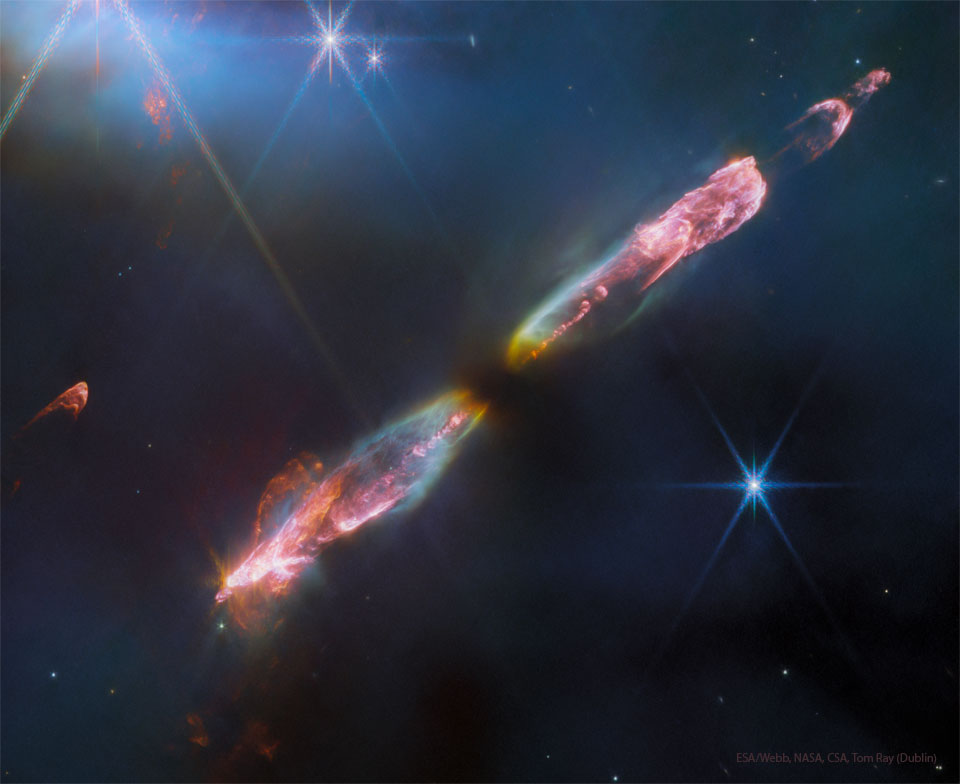
Ellen Naomi Cohen (September 19, 1941 – July 29, 1974), known professionally as Mama Cass and later on as Cass Elliot, was an American singer and voice actress. She was a member of the singing group the Mamas & the Papas. After the group broke up, Elliot released five solo albums. In 1998, she was posthumously inducted into the Rock and Roll Hall of Fame for her work with the Mamas & the Papas.
Ellen Naomi Cohen was born in Baltimore, Maryland, on September 19, 1941, the daughter of Philip (died 1962) and Bess Cohen (née Levine; 1915–1994).
Elliot retired to an apartment in Mayfair at Curzon Place at which singer-songwriter Harry Nilsson allowed her to stay. Several hours after Elliot left Jack Martin’s cocktail party she died in her sleep at age 32. According to Keith Simpson, who conducted her autopsy, she died of a heart attack, and there were no drugs in her system. Elliot died in Flat 12, 9 Curzon Place (later Curzon Square), Shepherd Market, Mayfair, London, owned by Harry Nilsson. Four years later, The Who‘s drummer Keith Moon died in the same bedroom, also aged 32 years.
more...Henry Kaiser (born September 19, 1952) is an American guitarist and composer, known as an idiosyncratic soloist, a sideman, an ethnomusicologist, and a film score composer. Recording and performing prolifically in many styles of music, Kaiser is a fixture on the San Francisco Bay Area music scene. He is considered a member of the “second generation” of American free improvisers. He is married to Canadian artist Brandy Gale. He is the son of Henry J. Kaiser Jr. and the grandson of industrialist Henry J. Kaiser.
In 1977, Kaiser founded Metalanguage Records with Larry Ochs (Rova Saxophone Quartet) and Greg Goodman. In 1979 he recorded With Friends Like These with Fred Frith, a collaboration which continued over the next 20 years. In 1983 they recorded Who Needs Enemies, and in 1987 the compilation album With Enemies Like These, Who Needs Friends? They joined with fellow experimental musicians John French, and English folk-rocker Richard Thompson to form French Frith Kaiser Thompson for two eclectic albums, Live, Love, Larf & Loaf (1987) and Invisible Means (1990). In 1999 Frith and Kaiser released Friends & Enemies, a compilation of their two Metalanguage albums along with additional material from 1984 and 1999.
more...Muhal Richard Abrams (born Richard Lewis Abrams; September 19, 1930 – October 29, 2017) was an American educator, administrator, composer, arranger, clarinetist, cellist, and jazz pianist in the free jazzmedium. He recorded and toured the United States, Canada and Europe with his orchestra, sextet, quartet, duo and as a solo pianist. His musical affiliations constitute a “who’s who” of the jazz world, including Max Roach, Dexter Gordon, Eddie “Lockjaw” Davis, Art Farmer, Sonny Stitt, Anthony Braxton, and The Art Ensemble of Chicago.
Abrams’s mother, Edna, was born in Memphis. His father, Milton, was born in Alabama and moved with his parents to Chicago. Richard Lewis Abrams was born there, the second of nine children, on September 19, 1930. His father became a self-employed handyman; his mother was a housewife.
more...George Lowen Coxhill (19 September 1932 – 10 July 2012) known professionally as Lol Coxhill, was an English free improvising saxophonist. He played soprano and sopranino saxophone.
more...Renowned Native American flutist and vocalist, powwow performer, multi-award recipient, and Lifetime Achievement Awardee, Robert Tree Cody (Maricopa/Dakota), peacefully departed on September 14, 2023. He graced this world for 72 years.
Enormous in stature, standing at an impressive height of 2.07 meters (6.79 feet), the indomitable “Tree” was among the trailblazers who disseminated traditional Native American singing and flute melodies across the globe. Over the course of his illustrious career, he launched eleven full-length albums through Canyon Records. He also contributed his artistry to numerous compilations and collaborative endeavors, featuring fellow artists such as Will Clipman, R. Carlos Nakai, Tony Redhouse, Hovia Edwards, Ruben Romero, and Janice Marie Johnson from A Taste of Honey.
more...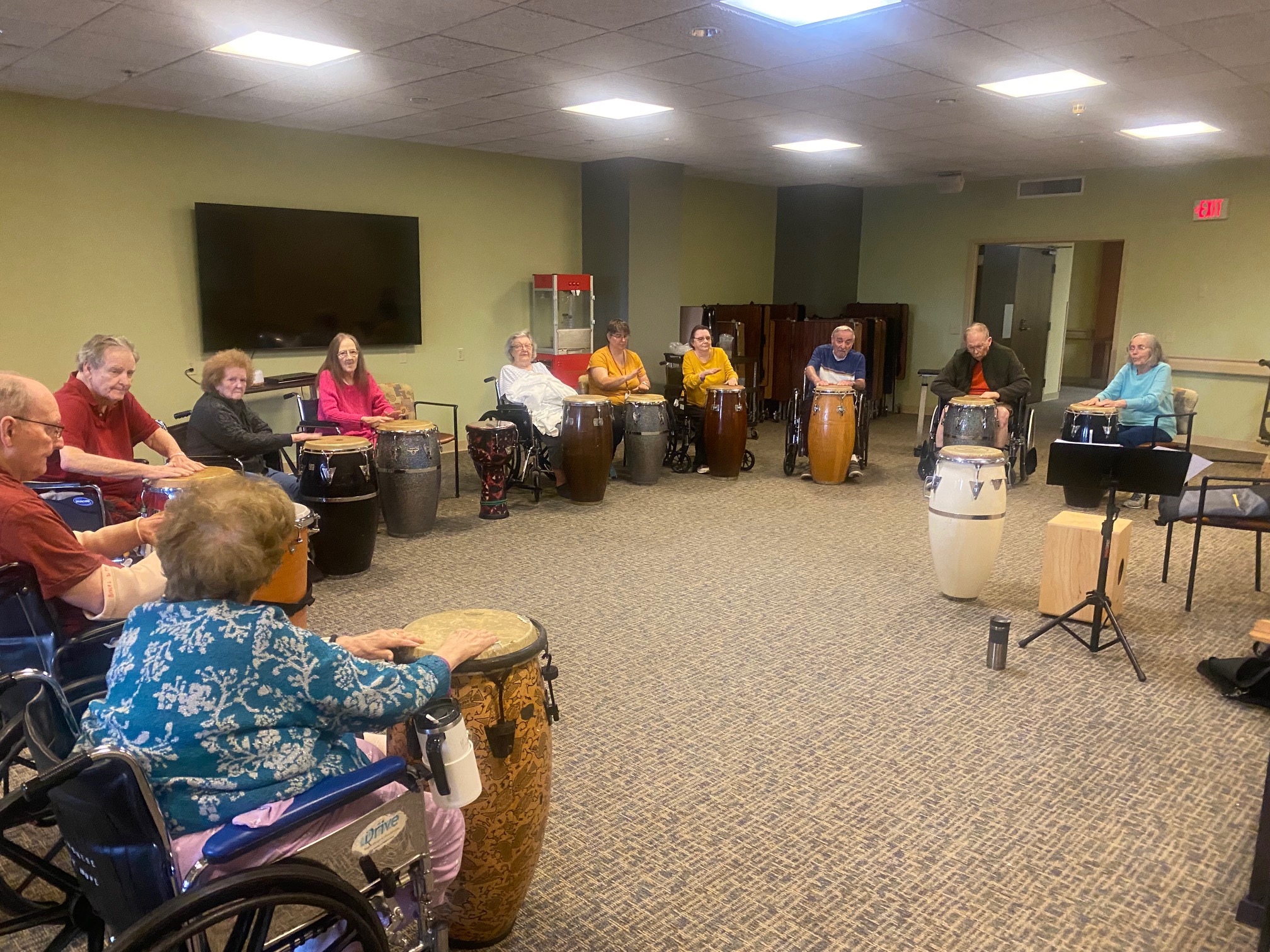
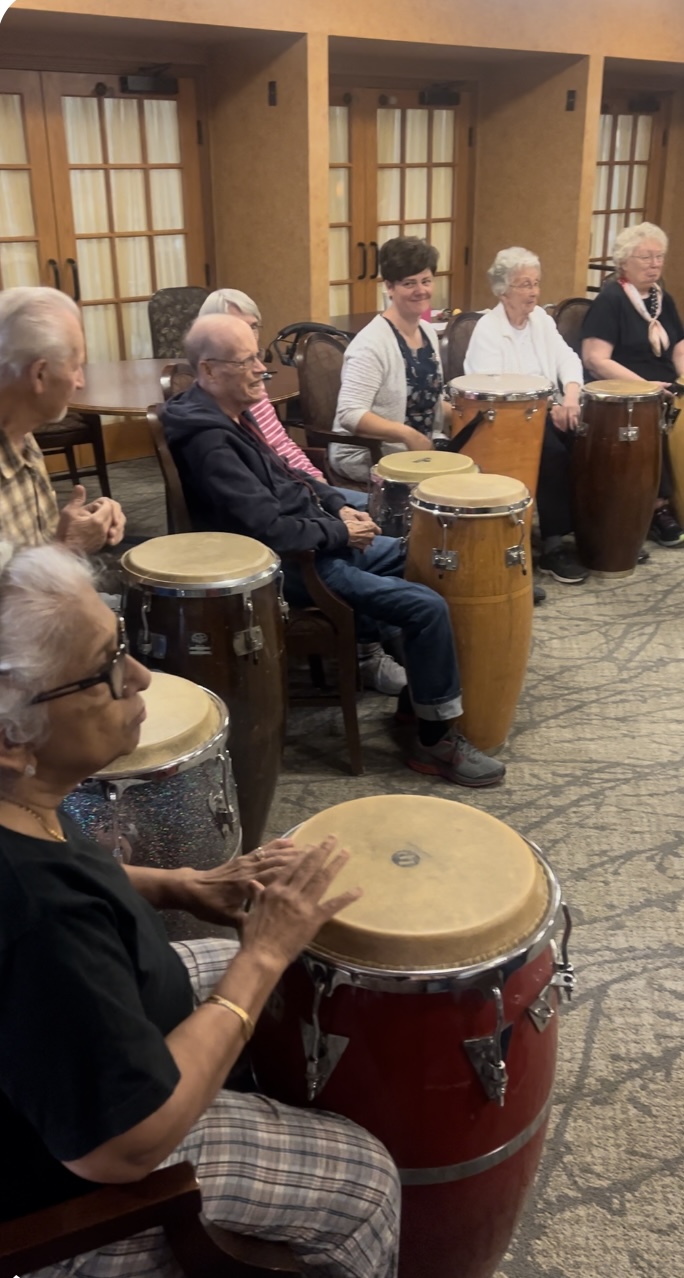
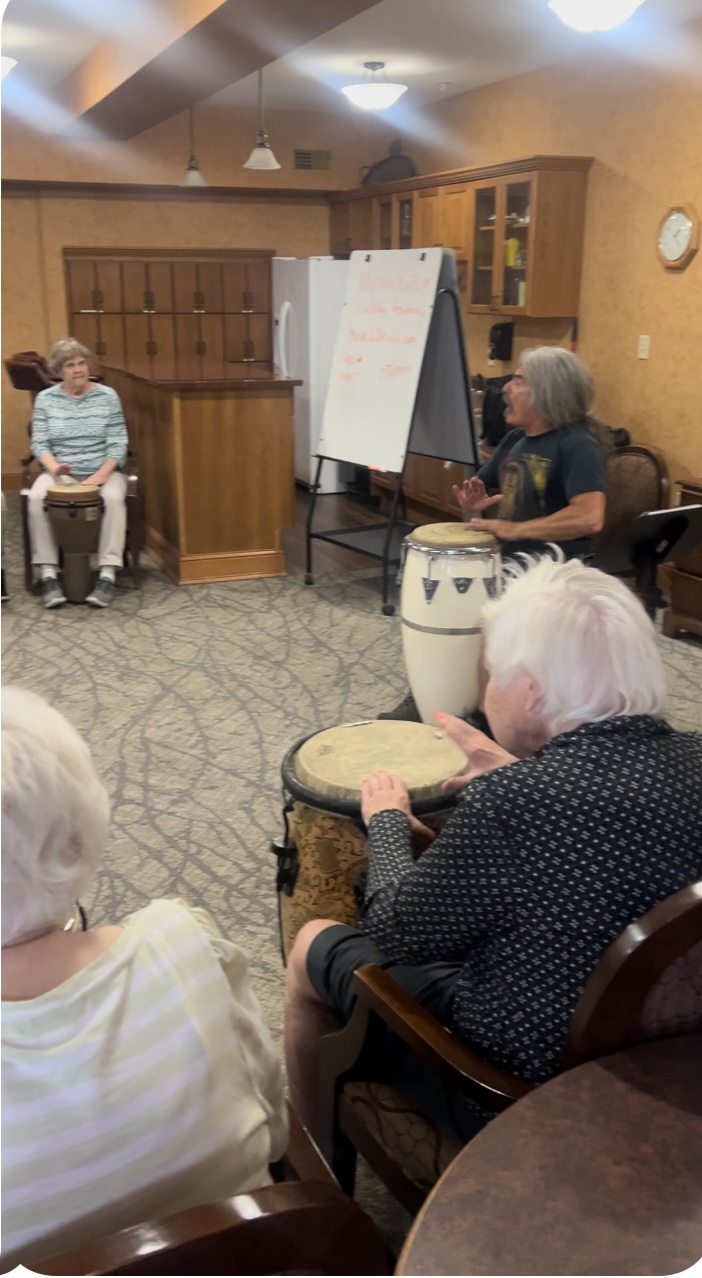
This Hubble Picture of the Week — taken using NASA/ESA Hubble Space Telescope’s Advanced Camera for Surveys (ACS) — shows Arp 107, a celestial object that comprises a pair of galaxies in the midst of a collision. The larger galaxy (in the left of this image) is an extremely energetic galaxy type known as a Seyfert galaxy, which house active galactic nuclei at their cores. Seyfert galaxies are notable because despite the immense brightness of the active core, radiation from the entire galaxy can be observed. This is evident in this image, where the spiraling whorls of the whole galaxy are readily visible. The smaller companion is connected to the larger by a tenuous-seeming ‘bridge’, composed of dust and gas. The colliding galactic duo lie about 465 million light-years from Earth. Arp 107 is part of a catalogue of 338 galaxies known as the Atlas of Peculiar Galaxies, which was compiled in 1966 by Halton Arp. It was observed by Hubble as part of an observing programme that specifically sought to fill in an observational ‘gap’, by taking limited observations of members of the Arp catalogue. Part of the intention of the observing programme was to provide the public with images of these spectacular and not-easily-defined galaxies, and as such, it has provided a rich source for Hubble Pictures of the Week. In fact, several recent releases, including this one and this one, have made use of observations from the same observing programme. [Image Description: A pair of merging galaxies. The galaxy on the left has a large, single spiral arm curving out from the core and around to below it, with very visible glowing dust and gas. The right galaxy has a bright core but only a bit of very faint material. A broad curtain of gas connects the two galaxies’ cores and hangs beneath them. A few small stars and galaxies are scattered around the black background.]
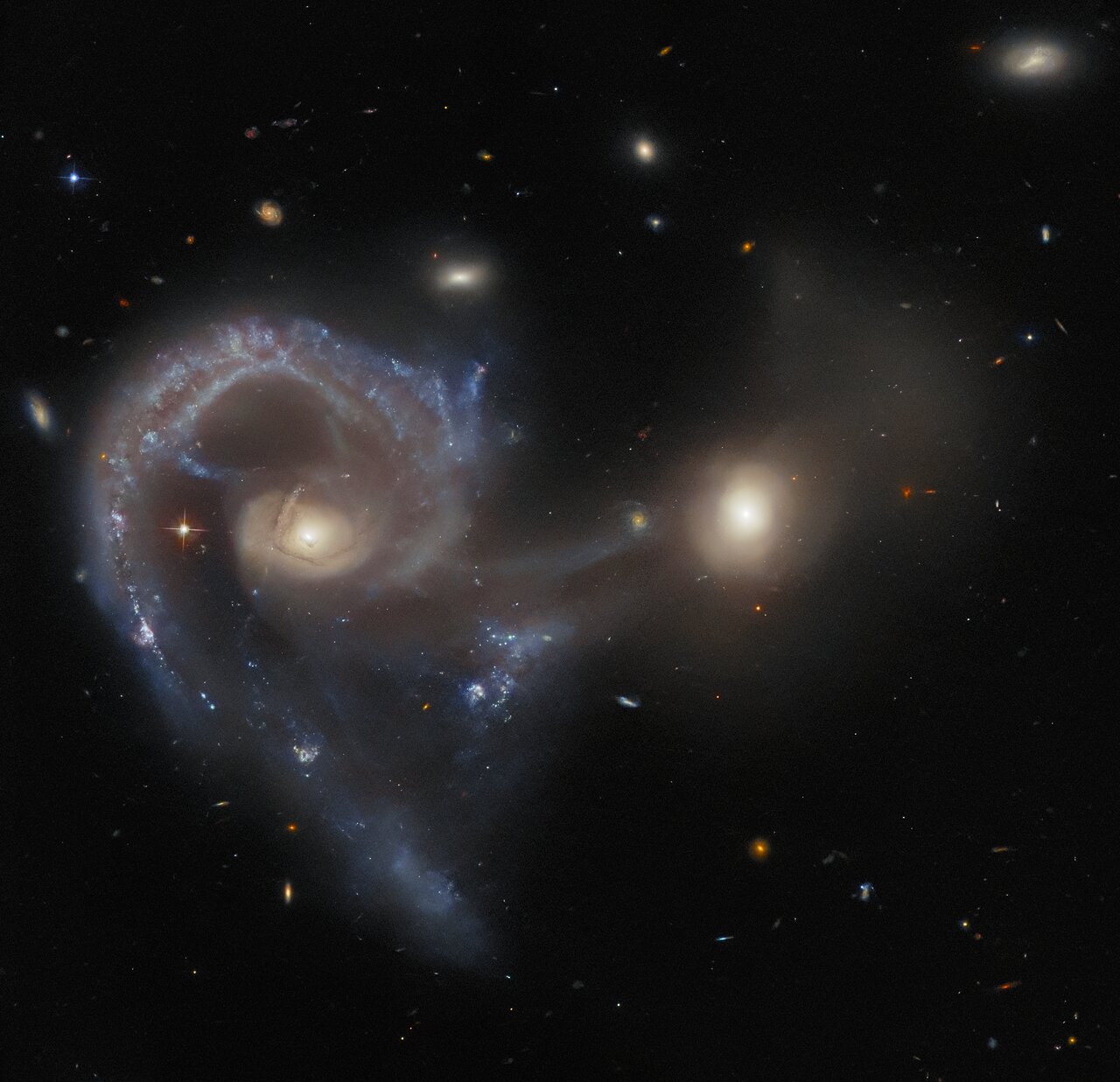
Philip Gary “Flip” Sloan (né Schlein; September 18, 1945 – November 15, 2015), known professionally as P. F. Sloan, was an American singer and songwriter. During the mid-1960s, he wrote, performed, and produced many Billboard Top 20 hits for artists such as Barry McGuire, the Searchers, Jan and Dean, Herman’s Hermits, Johnny Rivers, the Grass Roots, the Turtles, and the Mamas and the Papas.
Sloan’s signature song is “Eve of Destruction,” a 1965 U.S. number one for McGuire. Many of his songs were written in collaboration with Steve Barri. Their partnership yielded two US Top Ten hits—Herman’s Hermits’ “A Must to Avoid” (1965) and Johnny Rivers’ “Secret Agent Man” (1966)—and the Turtles‘ “You Baby” (1966).
Sloan was born in New York City, United States, to an American father and a Romanian-born mother. His family moved to West Hollywood, California in 1957, where his father, a pharmacist, changed the family name from “Schlein” to “Sloan” after repeatedly being denied a liquor license for his store.
more...Emily Remler (September 18, 1957 – May 4, 1990) was an American jazz guitarist, active from the late 1970s until her death in 1990.
Born in Englewood Cliffs, New Jersey, Remler began guitar at age ten. She listened to pop and rockguitarists like Jimi Hendrix and Johnny Winter. At the Berklee College of Music in the 1970s, she listened to jazz guitarists Charlie Christian, Wes Montgomery, Herb Ellis, Pat Martino, and Joe Pass.
Remler settled in New Orleans, where she played in blues and jazz clubs, working with bands such as Four Play and Little Queenie and the Percolators before beginning her recording career in 1981. She was praised by jazz guitarist Herb Ellis, who referred to her as “the new superstar of guitar” and introduced her at the Concord Jazz Festival in 1978. Remler bore the scars of her longstanding opioid use disorder,which is believed to have contributed to her death. In May, 1990, she died of heart failure at the age of 32 at the Connells Point home of musician Ed Gaston, while on tour in Australia.
more...Steve Marcus (September 18, 1939 – September 25, 2005) was an American jazz saxophonist.
Marcus was born in The Bronx, New York, United States. He studied at the Berklee College of Music in Boston, Massachusetts, between 1959 and 1961. He gained experience playing in the bands of Stan Kenton, Herbie Mann and Larry Coryell from 1963 to 1973.[1] His first album as a leader included an arrangement of the Beatles‘ song, “Tomorrow Never Knows“. He worked with jazz drummer Buddy Rich for the last twelve years of Rich’s life. After Rich died, Marcus led the band and renamed it Buddy’s Buddies.
His song “Half a Heart” (1968) has a riff very similar to the famous saxophone riff of “Baker Street” by Gerry Rafferty (recorded in 1977, released in 1978).
Marcus died in September 2005 in New Hope, Pennsylvania.
more...
Earl Charles Barrington May (September 17, 1927 – January 4, 2008) was an American jazz bassist. He was “one of the most prodigious and prolific bassists of the postwar era”.
May was born in New York City on September 17, 1927. As a child, he played the drums, and changed to the acoustic bass at the age of 14.[1] He “played left-handed on an instrument strung for a right-handed player”.
Until 1951, May had a job in insurance while playing in clubs at night. During this period, he played with Miles Davis, Lester Young, Gene Ammons, Sonny Stitt, and Mercer Ellington. He was also taught by Charles Mingus in the early 1950s. Through most of the 1950s he played in a trio with Billy Taylor, and also worked in the late 1950s with John Coltrane and Chet Baker.
more...Lalgudi Gopala Jayaraman (17 September 1930 – 22 April 2013) was an Indian Carnatic violinist, vocalist and composer. He is commonly grouped with M.S. Gopalakrishnan and T.N.Krishnan as part of the violin-trinity of Carnatic Music. He was awarded Padma Bhushan by the Government of India in 2001.
His disciples included his two children Lalgudi G. J. R. Krishnan, Lalgudi Vijayalakshmi, his sister Lalgudi Srimathi Brahmanandam, former composer-conductor of All India Radio’s Vadya Vrinda National Orchestra P. Purnachander Rao, renowned musician S P Ramh (grandson of Shri. G.N. Dandapani Iyer), renowned Harikatha exponent Vishaka Hari, leading carnatic vocalist Saketharaman, Vittal Ramamurthy, Dr. N. Shashidhar, Film Music Composer Girishh G, Padma Shankar, Kanchan Chandran, Raghuram Hosahalli, renowned violinist from London – Shri A.G.A.Gnanasundaram, Srinivasamurthy, Pakkala Ramdas, Sankari Krishnan, Yamini Ramesh, Mumbai Shilpa, Shreya Devnath, Krithika Natarajan, Salem Sisters, the leading Vainika Srikanth Chary and the Academy Award-nominated Bombay Jayashri Ramnath.
more...More Posts
- Bill Watrous Day
- Billie Pierce Day
- World Music with Alba Molina
- Daily Roots with King Tubbyhttps://www.youtube.com/watch?v=TOxKeKRIhhI
- The Cosmos with NGC 3256
- Tina Brooks Day
- Tal Farlow Day
- World Fusion with Frédéric Galliano & the African Divas
- Daily Roots with Scientist
- The Cosmos with Chamaeleon I
- Monty Alexander Day
- Grant Green Day
- Al Grey Day
- World Music with Faudel Belloua
- Daily Roots with Wayne Wade
- Diego Memorial Day
- The Cosmos with M17
- Peter Erskine Day
- Jerry Gonzales Day
- World Music with Nawang Khechog